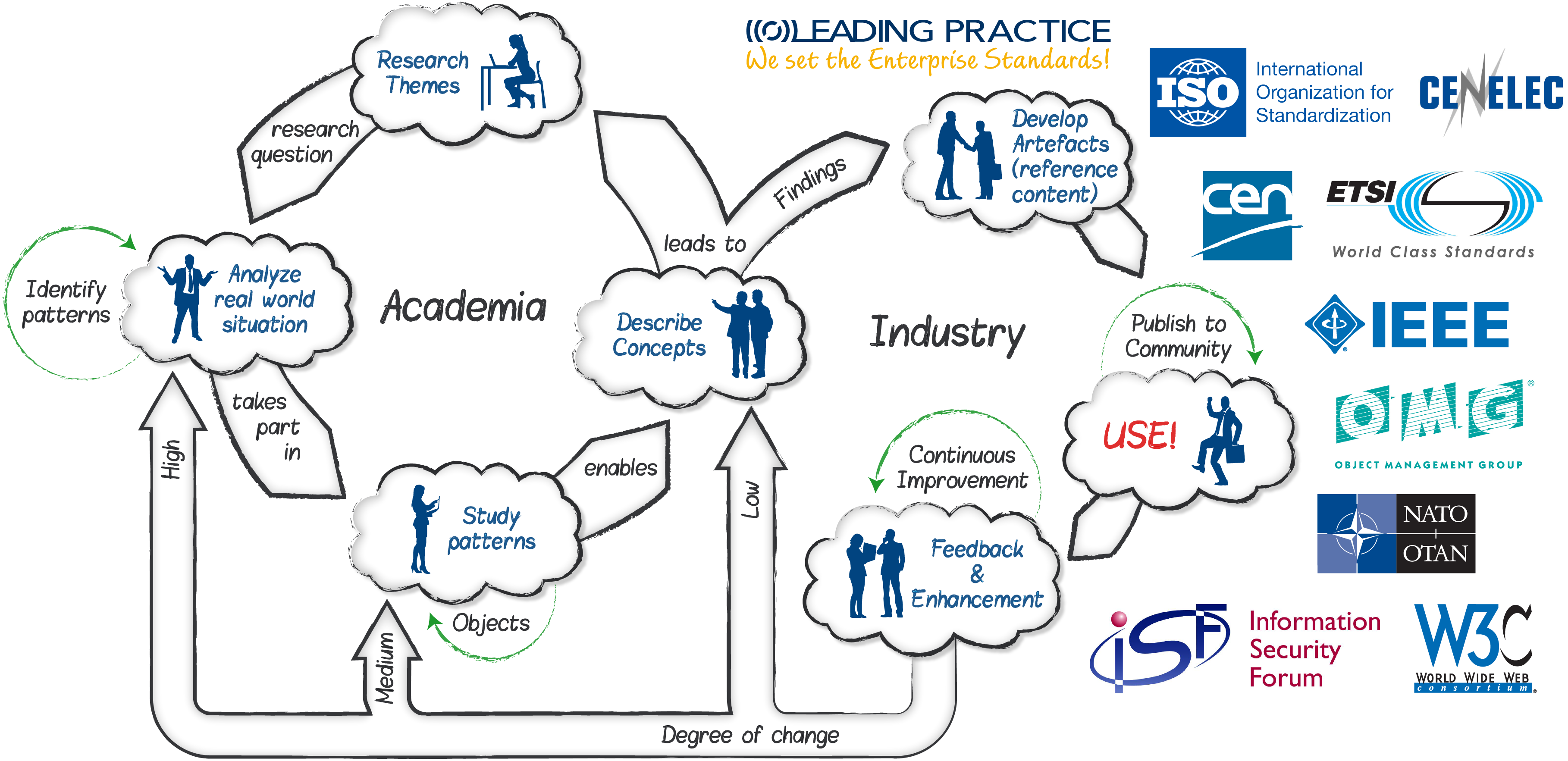What is the Global University Alliance?
Founded in 2004, the Global University Alliance is a non-profit organization and international consortium of university lecturers and researchers whose aim it is to provide a collaborative platform for academic research, analysis and development and to explore leading practices, best practices and industry practices as well as to develop missing practices. The Global University Alliance currently consists of 450+ professors, lecturers and researchers from across the world and is growing rapidly in size and scope.
The Global University Alliance aims to align intellectual resources across the academic world to:
- RESEARCH: Address research concerns and questions that span around enterprise ontology and thereby the enterprise concepts, design, functions, tasks, information handling and governance and the relationships between those concepts within enterprise modelling and enterprise architecture disciplines.
- UNIVERSITY CURRICULUM: Develop university curriculums for both Bachelor and Master level (existing BPM, SOA, Enterprise Architecture, Sustainability, Information Management and Project Management).
- DEVELOP STANDARDS: Package applied academic research and findings into frameworks, methods and approaches that can be used by industries and universities alike.
- COMMUNITY SHARING: Share and publish the findings either in publications or to this open standard community.
Academic Industry Design
A Collaboration Between Academia & Industry
Many hundreds of people (academics and practitioners) have been directly involved over the many years in researching, comparing, identifying patterns, peer reviewing, categorizing and classifying, again peer reviewing, developing models and meta models, again peer reviewing, and at last but not least developing standards and reference content with industry. Through this iterative peer review process that involves both academics and practitioners as reviewers and contributors.
As illustrated in the figure, they do this through defining clear research themes, with detailed research questions, where they analyse and study patterns, and describe concepts with their findings. This, in turn, can lead to additional research questions or themes as well as the development of artefacts which can be used as reference content by practitioners and industries as a whole.
What the Global University Alliance also does uniquely is the collaboration with standards bodies like:
- LEAD: LEADing Practice – the largest enterprise standard body (in member numbers), which actually has been founded by the Global University Alliance. The LEADing Practice Enterprise Standards are the result of both the Global University Alliance research and years of international industry expert consensus and feedback on the artefacts and thereby repeatable patterns.
- ISO: ‘The International Organization for Standardization.
- CEN: The European Committee for Standardization (CEN).
- IEEE: The Institute of Electrical and Electronics Engineers is the largest association of technical professionals with more than 400,000 members.
- OMG: Object Management Group: Develops the software standards.
- NATO: North Atlantic Treaty Organizations (NATO’s) with the 28 member states across North America and Europe and the additional 37 countries participate in NATO’s Partnership for Peace and dialogue programmes, NATO represents the biggest non-standard body that standardises concepts across 65 countries.
- ISF: The Information Security Forum investigates and defines information security standards.
- W3C: World Wide Web Consortium – the W3C’s purpose is to lead the World Wide Web to its full potential by developing protocols and guidelines that ensure the long-term growth of the Web/Internet.
The ‘Digital Innovation Event’ 2018
